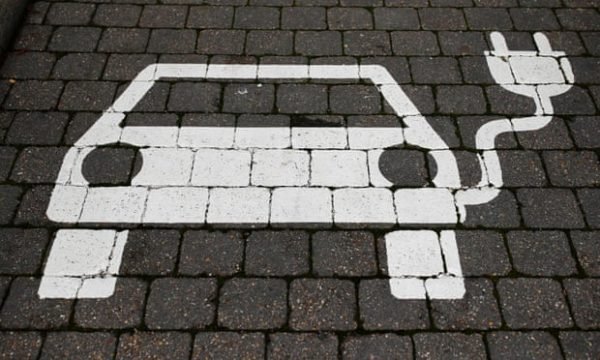
Don’t Buy Tote Bags, Stream Netflix or Ride Electric Vehicles — They’re Bad for the Environment

It’s 2020 — the year after the rise of Greta Thunberg when we are coping with the after-effects of terrifying Amazon fires and the current reality of Australia’s all-encompassing blaze. So, no doubt, environmentalism will be on most people’s minds and resolution to-do lists.
If you’re starting the year putting your groceries into a cotton tote bag, riding an electric vehicle to work and back or streaming a shameless amount of “You” episodes just because you wish you had a more psychotic, yet attentive boyfriend — stop now. You could be doing the planet more harm than good as these 2019 news stories tried to warn us.
Don’t Buy Cotton Tote Bags

Back in April 2019, Zoë Schlanger published an article on Quartz entitled, Your Cotton Tote is Pretty Much the Worst Replacement for a Plastic Bag.
This article didn’t do badly; in fact, it received 87.9K shares on Facebook alone. That’s because its timing couldn’t have been better after Britain had introduced its plastic bag charge and sales of cotton tote bags were sky-high.
Zoe’s point wasn’t to keep on buying new plastic grocery bags and suck up the 5p charge at the tills. Instead, the article attempted to warn readers about the environmental cost per use, as well as considering other factors like the impact of manufacturing and water use.
It’s true that people are against plastic because of its extremely long lifecycle and the fact it causes marine pollution, danger to animals and breaks down into microplastics if we are not careful. Yet it’s also true that plastic, out of every material used to make grocery bags, has the smallest impact on climate change in terms of production. Zoe measured the following factors to form her analysis:
- The impact of manufacturing
- Water use
- Air pollution
- Human toxicity
The article leans on some Danish research showing that cotton bags “must be reused thousands of times before they meet the environmental performance of plastic bags.”
So, you’ve bought a cute tote bag everywhere you’ve been — a book signing, a music festival, an art show — thinking you were doing the right thing. What now? The article wraps up advising people to reuse their existing bags, plastic or otherwise until they’re falling apart.
This article serves as a great reminder that consumption levels are the real environmental killer and shows that context is everything. For example, using plastic as a hygienic material in healthcare can only be a good thing. So using your existing plastic carriers before sporting an organic cotton tote is okay.
Stop Streaming Netflix
Netflix and don’t kill the planet. That’s what Sara Chodosh said when she announced her latest research on the environmental impact of watching movies. The shocking infographic was posted up on Popular Science for everyone to consider.
We all miss DVD rental places like Blockbuster and the excitement of waiting for a mail-order movie to arrive in the post. Even though most of us feel nostalgic about such Friday night pleasures, we’ve all become accustomed to the instant access and ease of streaming websites like Netflix. But which route is more environmental?
Mail Rental DVD (7.8*) — Taking into account factors such as manufacturing the DVD and DVD player, as well as delivery by the postal service and the power it takes to watch the movie, mail rental DVDs are surprisingly the most environmental option.
Streaming (7.9*) — Just falling short, streaming services like Netflix use slightly more energy than a mail rental DVD. While manufacturing a DVD and a computer boast fairly similar energy stats, the energy used to transmit data through a network is considerably more than the energy used to make a postal delivery. Streaming’s energy status is regained a little by the minimal energy used to run a TV and streaming device over powering up an old-fashioned DVD player. All in all, there’s not much in it with 0.1 of a megajoule setting mail rental DVDs apart.
Store Rental DVD (12*) — Blockbuster’s glory days are over— and for good reasons. The store rental DVD process uses more than four more megajoules per viewing hour than the other two methods, making it the least energy efficient. While Blockbuster dates will live on in our memory, that’s where they should stay for the sake of the planet — firmly in the past. Driving to the rental store really drives up the energy amount of this option, making us thankful that there’s only one Blockbuster store left in the world.
*Megajoules of energy per viewing hour.
Fine. So, streaming movies on services like Netflix doesn’t actually lose the fight all that horribly. But the energy breakdown of different activities should make us think about the amount of viewing pleasure we indulge in each week. The real crux of watching content online is the energy used to transmit data through the network.
So, you might be able to justify watching a movie at the weekend (like you used to after returning home from a family fight about the latest titles at Blockbuster). But streaming TV shows, documentaries, cartoons and films regularly, just because they exist and “Hey, I pay a monthly subscription, I might as well use it” is a recipe for environmental disaster.
We’re not suggesting that you save a decimal of energy by waiting for your movie to arrive in enveloped packaging, but you should look at limiting your viewing time to replicate what it might once have been when you had less choice.
Veto against Electric Vehicles

As an environmental activist, electric vehicles might be your favoured mode of transport. If that’s the case, The Guardian and its writers are about to shatter your dreams.
The Guardian has reported that electric cars aren’t as environmentally friendly as marketing makes out. In a separate article, the publication talks about electric scooters — available throughout many major European and US cities — and how they’re great for the planet in theory, yet maybe not in practice.
Electric Cars — The idea of electric vehicles is a climate-friendly dream; a vehicle that finally doesn’t use planet polluting gas and instead charges at suitable stations. The Guardian writer, Hans-Werner Sinn, takes issue with this, claiming that, like regular vehicles, electric vehicles also emit plenty of CO2 in different, hidden ways. The power plants that help to provide their energy supply during darker months and fossil fuels used to produce EV batteries make electric cars no better than the fuel-burning shells we all feel guilty about driving.
Electric Bikes & Scooters — This innovative form of public transport has spread across the globe with brands like Bird, Lime and Skip forming an effective scooter-sharing system. The premise is that these small electric vehicles can be picked up at various locations and temporarily hired using a mobile application. Payment is easy and requires no physical staff members. Plus, it’s environmental. Right?
Think again. While the activity of riding an electric scooter is less than harmful, the manufacturing involved in producing the vehicle and the greenhouse gas emitted by collecting discarded scooters makes this activity not so wholesome. Each night, brands have representatives roaming around in gas-guzzling vans looking for spare vehicles flung on the side of the road, meaning the transport that transports the transport isn’t so climate-friendly.
Want to practice some environmental behaviours that don’t have a dark side? Read our post, Taking Everyday Eco-Action: 10 Tips to Save the Planet Earth.
ABOUT THE AUTHOR:

Adam Middleton became the Business Development Manager for Takeaway Packaging after a varied career in PR, shipping and marketing within the packing industry. With a Bachelor’s degree in Human Geography and a Masters in International Marketing, Adam has a keen interest in the environmental impact of consumerism.















































